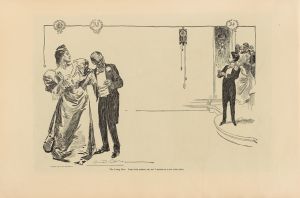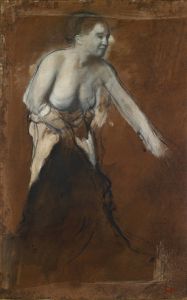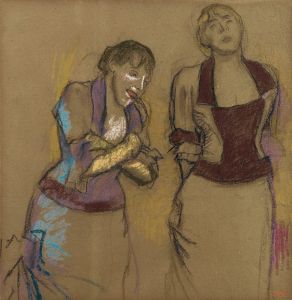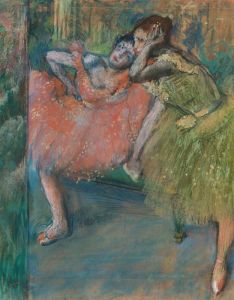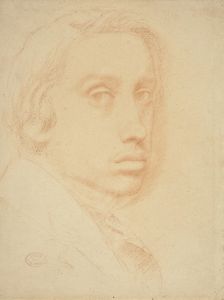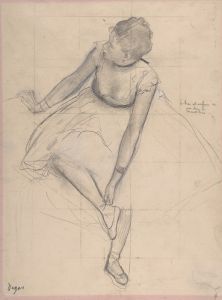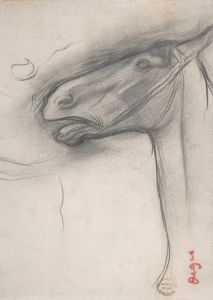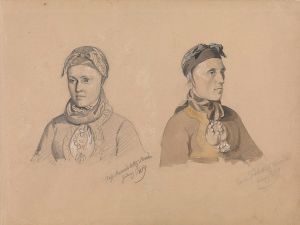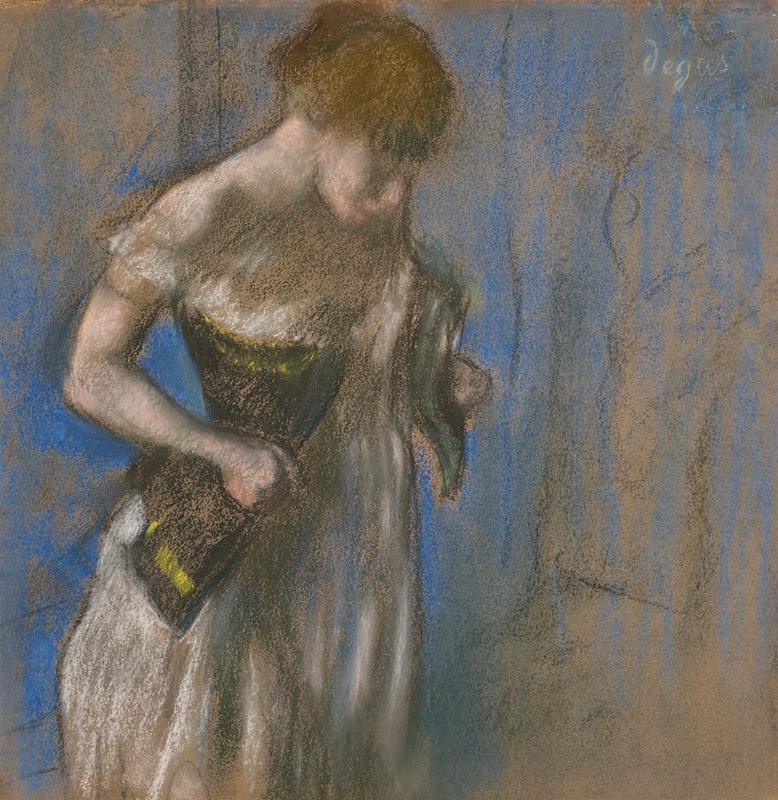
Femme mettant son corset
A hand-painted replica of Edgar Degas’s masterpiece Femme mettant son corset, meticulously crafted by professional artists to capture the true essence of the original. Each piece is created with museum-quality canvas and rare mineral pigments, carefully painted by experienced artists with delicate brushstrokes and rich, layered colors to perfectly recreate the texture of the original artwork. Unlike machine-printed reproductions, this hand-painted version brings the painting to life, infused with the artist’s emotions and skill in every stroke. Whether for personal collection or home decoration, it instantly elevates the artistic atmosphere of any space.
Edgar Degas, a prominent French artist associated with the Impressionist movement, is renowned for his innovative approach to capturing human figures in intimate and dynamic moments. One of his works, Femme mettant son corset (translated as Woman Putting on Her Corset), exemplifies his fascination with the female form and his ability to depict everyday, private scenes with a sense of immediacy and realism.
This artwork portrays a woman in the act of adjusting her corset, a common yet deeply personal moment. Degas often explored themes of femininity and the routines of women, particularly in domestic or backstage settings. His works frequently focused on dancers, bathers, and women engaged in ordinary activities, offering a glimpse into their private lives. Femme mettant son corset fits within this broader context of Degas' oeuvre, where he sought to capture the natural, unposed movements of his subjects.
Degas was known for his experimental techniques, and this piece reflects his mastery of composition and his interest in unconventional perspectives. The painting or drawing (depending on the medium used, as Degas worked across various media) likely employs a cropped, intimate framing, a hallmark of his style. This approach draws the viewer's attention to the physicality of the subject and the tactile nature of the scene. The muted color palette and attention to light and shadow further enhance the sense of realism and immediacy.
While Degas is often associated with Impressionism, he did not fully embrace the movement's emphasis on plein air painting or the fleeting effects of light in outdoor settings. Instead, he preferred controlled environments and often worked from memory, sketches, or models in his studio. This allowed him to focus on the structure, movement, and psychological depth of his subjects. Femme mettant son corset is consistent with this approach, as it captures a moment of quiet introspection and physicality.
The exact date of creation for Femme mettant son corset is not definitively documented, but it likely falls within the late 19th century, a period when Degas was actively exploring similar themes and techniques. The medium used for this work is also not universally agreed upon, as Degas frequently worked with oil paints, pastels, and charcoal, often combining them in innovative ways.
As with many of Degas' works, Femme mettant son corset invites viewers to consider the intersection of art and voyeurism, as it depicts a private moment in a way that feels both intimate and detached. The piece is a testament to Degas' skill in capturing the nuances of human form and movement, as well as his ability to evoke emotion and narrative through composition and technique.
Further details about the specific location of this artwork, whether it resides in a museum or private collection, are not readily available.









